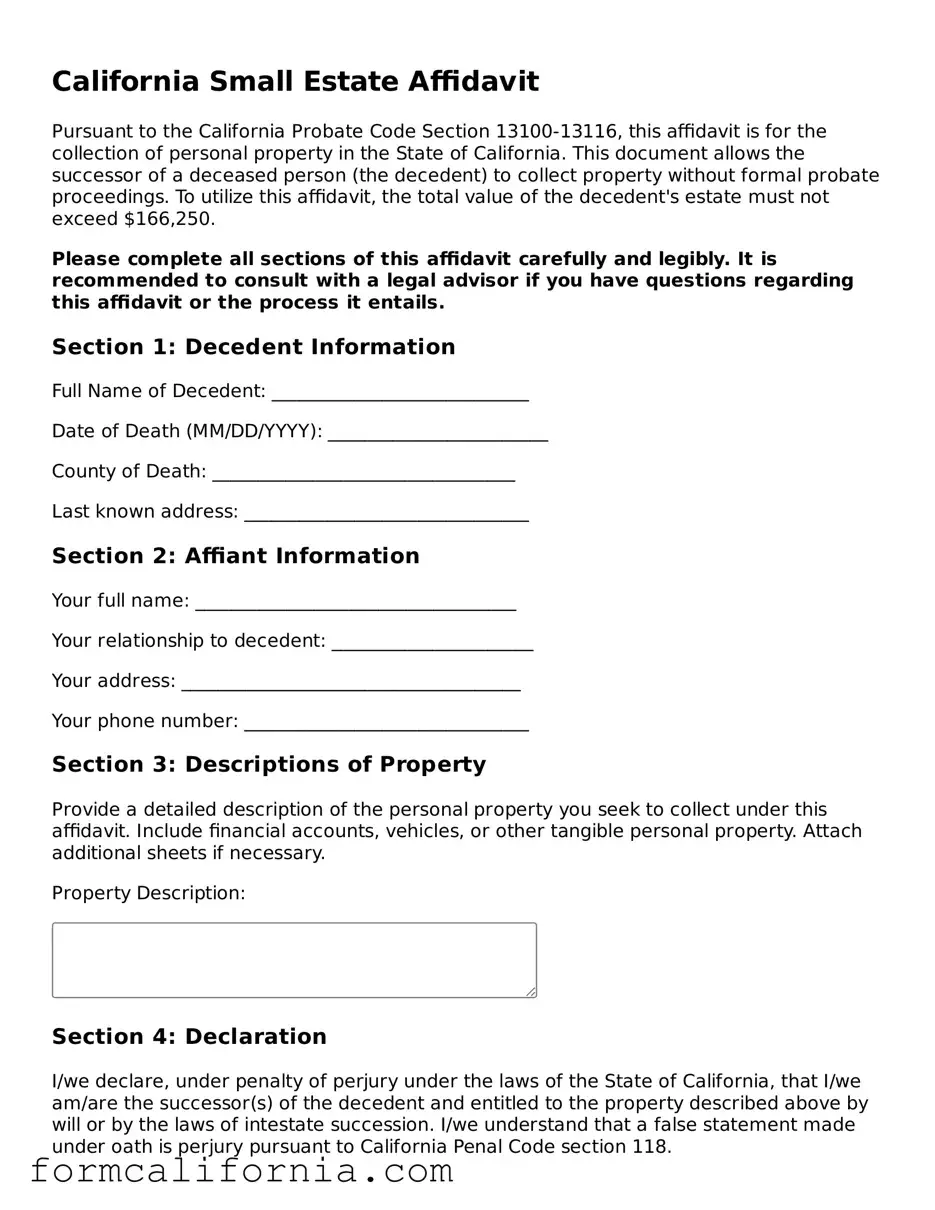California Small Estate Affidavit
Pursuant to the California Probate Code Section 13100-13116, this affidavit is for the collection of personal property in the State of California. This document allows the successor of a deceased person (the decedent) to collect property without formal probate proceedings. To utilize this affidavit, the total value of the decedent's estate must not exceed $166,250.
Please complete all sections of this affidavit carefully and legibly. It is recommended to consult with a legal advisor if you have questions regarding this affidavit or the process it entails.
Section 1: Decedent Information
Full Name of Decedent: ____________________________
Date of Death (MM/DD/YYYY): ________________________
County of Death: _________________________________
Last known address: _______________________________
Section 2: Affiant Information
Your full name: ___________________________________
Your relationship to decedent: ______________________
Your address: _____________________________________
Your phone number: _______________________________
Section 3: Descriptions of Property
Provide a detailed description of the personal property you seek to collect under this affidavit. Include financial accounts, vehicles, or other tangible personal property. Attach additional sheets if necessary.
Property Description:
Section 4: Declaration
I/we declare, under penalty of perjury under the laws of the State of California, that I/we am/are the successor(s) of the decedent and entitled to the property described above by will or by the laws of intestate succession. I/we understand that a false statement made under oath is perjury pursuant to California Penal Code section 118.
Section 5: Signature
Date: ________________ Signature: _______________________________
Affiant's Printed Name: _________________________________________
Instructions for Use:
- Complete all sections of this affidavit with accurate information.
- Obtain the death certificate of the decedent.
- Prepare a detailed list of the personal property.
- If applicable, attach legal proof of your right to the property (e.g., will, trust document).
- Sign the affidavit in front of a notary public.
- Present this affidavit, along with the death certificate and any other required documents, to the holder of the property (e.g., bank, DMV).
This document does not require court approval but must be presented with all required attachments to the entity holding the decedent's property. Entities may require additional documentation or information before releasing any property.
It is vital to understand that this affidavit cannot be used until 40 days have elapsed since the death of the decedent. Ensure all information provided is truthful and accurate to avoid legal penalties.
